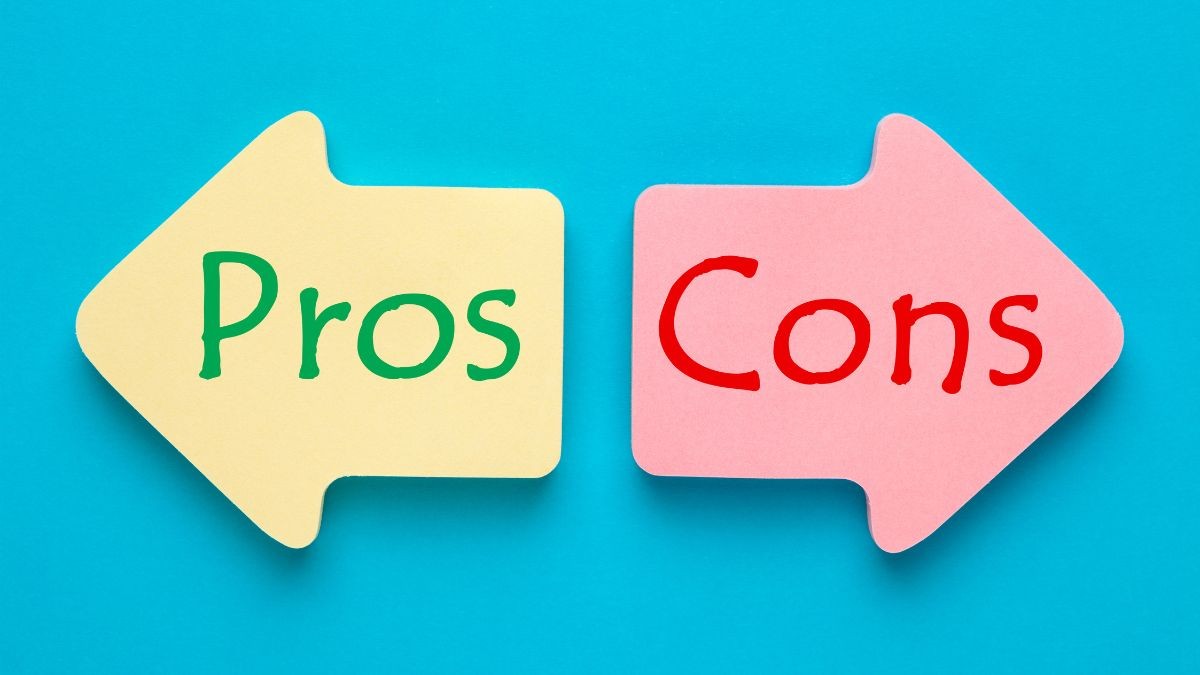In a world where the cost of education is skyrocketing to the moon, the 529 plan emerges as a beacon of hope for parents and students alike. Imagine a savings account, but supercharged for educational expenses, offering tax breaks that stretch your hard-earned dollars further.
With the 529 plan, you’re not just saving but investing in dreams, be it college, vocational school, or even K-12 private education.
This article will unwrap the layers of the 529 plan, diving into its money-saving magic, the undeniable advantages, and the crucial considerations you need to know.
What It Is 529 Plan: Essentials Explained
A 529 plan is a tax-advantaged savings plan designed to encourage saving for future education costs.
1. Types of 529 Plans
- Savings Plans: Investment accounts where contributions can grow tax-deferred and be withdrawn tax-free for qualified education expenses.
- Prepaid Tuition Plans: Allow you to pre-pay all or part of the costs of an in-state public college education. They may also be converted for use at private and out-of-state colleges.
2. Tax Benefits
- Federal Tax Advantages: Earnings grow tax-free, and distributions for qualified education expenses are also tax-free.
- State Tax Advantages: Many states offer full or partial tax deductions or credits for contributions to a 529 plan.
3. Contribution Limits
- High Contribution Limits: Vary by state, often ranging from $235,000 to $529,000 per beneficiary.
- Gift Tax Considerations: Contributions are considered gifts for tax purposes. In 2023, up to $17,000 per year can be contributed without triggering the federal gift tax.
4. Qualified Expenses
- Educational Expenses: Include tuition, fees, books, supplies, equipment, and room and board for college students. Recently expanded to cover up to $10,000 per year for K-12 tuition and certain apprenticeship program costs.
- Student Loan Repayments: Up to $10,000 can be used to repay the beneficiary’s or their sibling’s student loans.
5. Investment Options
- Varied Investment Choices: Typically include mutual funds and age-based portfolios that automatically shift from aggressive to conservative investments as the beneficiary gets closer to college age.
6. Flexibility and Control
- Change of Beneficiary: If the original beneficiary doesn’t need the funds, you can change the beneficiary to another eligible family member.
- Control Over Account: The account owner, not the beneficiary, retains control over the funds, including investment decisions and distributions.
7. Financial Aid Impact
- Parent-Owned Accounts: Considered a parental asset on the FAFSA, affecting up to 5.64% of the student’s financial aid package.
- Student-Owned or Third-Party Accounts: This may have a more significant impact on financial aid eligibility.
8. Penalties for Non-Qualified Withdrawals:
- Income Tax and Penalty: Non-qualified withdrawals are subject to income tax and an additional 10% federal tax penalty on earnings.
9. State Variability
- Different in Each State: Each state has its own 529 plan, with unique features, benefits, and investment options. Some states offer more than one plan.
10. Recent Expansions and Changes
- SECURE Act: Expanded 529 plan usage to cover apprenticeship programs and up to $10,000 of student loan repayments.
- K-12 Education: Plans now allow for tax-free withdrawals for private, public, or religious elementary or secondary school tuition.
Real Facts and Figures (as of the latest data)
- Number of Accounts: There are millions of 529 plan accounts in the United States.
- Total Assets: 529 plans hold several hundred billion dollars in total assets.
- Average Account Size: The average 529 plan account size is tens of thousands of dollars, varying by state and plan.
How A 529 Plan Saves Money

A 529 plan is not just a savings account; it’s a powerful tool for reducing the future financial burden of education through various mechanisms.
1. Tax-Deferred Growth
- Mechanism: The money you invest in a 529 plan grows tax-deferred. This means you don’t pay taxes on the investment gains each year, as you would with a regular savings account.
- Impact: Over time, this can result in significantly more money accumulating due to the power of compound interest. For example, if you invest $10,000 and it grows at 6% annually, in 18 years, you’d have over $28,900 in a tax-deferred account versus about $22,600 in a taxable account.
2. Tax-Free Withdrawals for Qualified Expenses
- Mechanism: Withdrawals from a 529 plan are tax-free when used for qualified education expenses, including tuition, room and board, books, and other required supplies.
- Impact: This can save a substantial amount in taxes compared to using a regular savings account or taxable investment account. For instance, if you withdraw $50,000 for college costs, you could save approximately $12,500 in taxes (assuming a 25% tax bracket).
3. State Income Tax Deductions or Credits
- Mechanism: Many states offer tax deductions or credits for contributions to a 529 plan. This can directly reduce your state income tax bill.
- Impact: The amount saved varies by state. For example, New York offers a deduction of up to $5,000 per taxpayer ($10,000 for married couples filing jointly), potentially saving hundreds of dollars in state taxes annually.
4. Gift Tax Benefits
- Mechanism: Contributions to a 529 plan qualify for the annual gift tax exclusion. In 2023, this means you can contribute up to $17,000 per beneficiary without triggering the gift tax. There’s also an option to front-load five years’ worth of contributions in a single year.
- Impact: This allows for large, tax-free transfers of wealth to beneficiaries, potentially saving thousands in gift and estate taxes, especially for high-net-worth individuals looking to reduce their taxable estate.
5. Reduced Dependency on Student Loans
- Mechanism: By saving in advance for education, students are less likely to need student loans, which accrue interest and can lead to significant debt.
- Impact: The average student loan borrower has $36,510 in student loan debt (as per the latest data). By using a 529 plan, families can significantly reduce or eliminate the need for loans, saving thousands in interest payments.
6. Flexibility and Control
- Mechanism: If the designated beneficiary doesn’t need the funds for college, you can change the beneficiary to another family member without penalty. This ensures the money is still used for educational purposes and continues to enjoy tax benefits.
- Impact: This flexibility ensures that your investment isn’t wasted and can adapt to your family’s changing needs, maximizing the value of every dollar saved.
Pros of 529 Plans

1. Tax Advantages
- Tax-Deferred Growth: Investments grow tax-deferred, enhancing the power of compound interest.
- Tax-Free Withdrawals: Distributions for qualified education expenses are tax-free, saving significant amounts over time.
2. State Tax Benefits
- Deductions/Credits: Many states offer tax deductions or credits for contributions, directly reducing your state tax bill.
3. High Contribution Limits
- Large Savings Potential: Contribution limits are high, often exceeding $300,000, allowing substantial education savings.
4. Gift Tax Benefits
- Exclusion and Front-loading: Contributions qualify for the annual gift tax exclusion, and you can make five years’ worth of contributions at once.
5. Investment Options
- Diverse Choices: Plans typically offer various investment options, including age-based portfolios that automatically adjust over time.
6. Beneficiary Flexibility
- Changeable Beneficiary: If the original beneficiary doesn’t need the funds, you can change the beneficiary to another family member.
7. Minimal Impact on Financial Aid
- Parental Assets: Parent-owned 529 plans are assessed at a maximum rate of 5.64% of their value in federal financial aid calculations.
8. Wide Eligibility
- No Income Restrictions: Anyone can open a 529 plan, regardless of income level, offering a universal saving tool.
Cons of 529 Plans
1. Penalties for Non-Qualified Withdrawals
- Taxes and Penalties: Non-qualified withdrawals are subject to income tax and a 10% penalty on earnings, reducing the amount available.
2. Limited Investment Options
- Restricted Choices: Some plans may have limited investment options or higher fees, affecting potential returns and savings growth.
3. Restricted Use of Funds
- Qualified Expenses Only: Funds must be used for qualified education expenses; otherwise, penalties and taxes apply.
4. Impact on Financial Aid
- Asset Consideration: Assets in a 529 plan can affect financial aid eligibility, especially if not parent-owned.
5. Complexity and Variability
- State-Specific Rules: Each state’s 529 plan has its own set of rules and benefits, requiring research and understanding.
6. Potential for Overfunding
- Unused Funds Issue: If the beneficiary doesn’t attend college or requires less money than saved, funds might be overfunded, leading to penalties if not used for education.
7. State Tax Recapture
- Recapture of Benefits: Rolling over funds to another state’s plan or non-qualified distributions may lead to recapturing of previous state tax benefits.
8. Market Risk
- Investment Volatility: Like any investment, 529 plans are subject to market risk, and poor performance can affect the amount saved.
Conclusion
529 plans stand out as a compelling option for those looking to invest in a loved one’s educational future. With their significant tax advantages, high contribution limits, and flexibility in beneficiary designation, these plans offer a robust framework for accumulating and utilizing educational funds.
However, potential investors must navigate the complexities of investment restrictions, potential penalties for non-qualified withdrawals, and the impact on financial aid.
Ultimately, when used wisely, 529 plans can be a powerful tool in the pursuit of educational aspirations, making them a worthy consideration for any long-term financial strategy focused on education.
I’m Grayson Watson, your frugal companion and the brain behind this money-saving extravaganza. Strap yourself in, because we’re about to embark on a wallet-friendly adventure like no other. Learn More!

